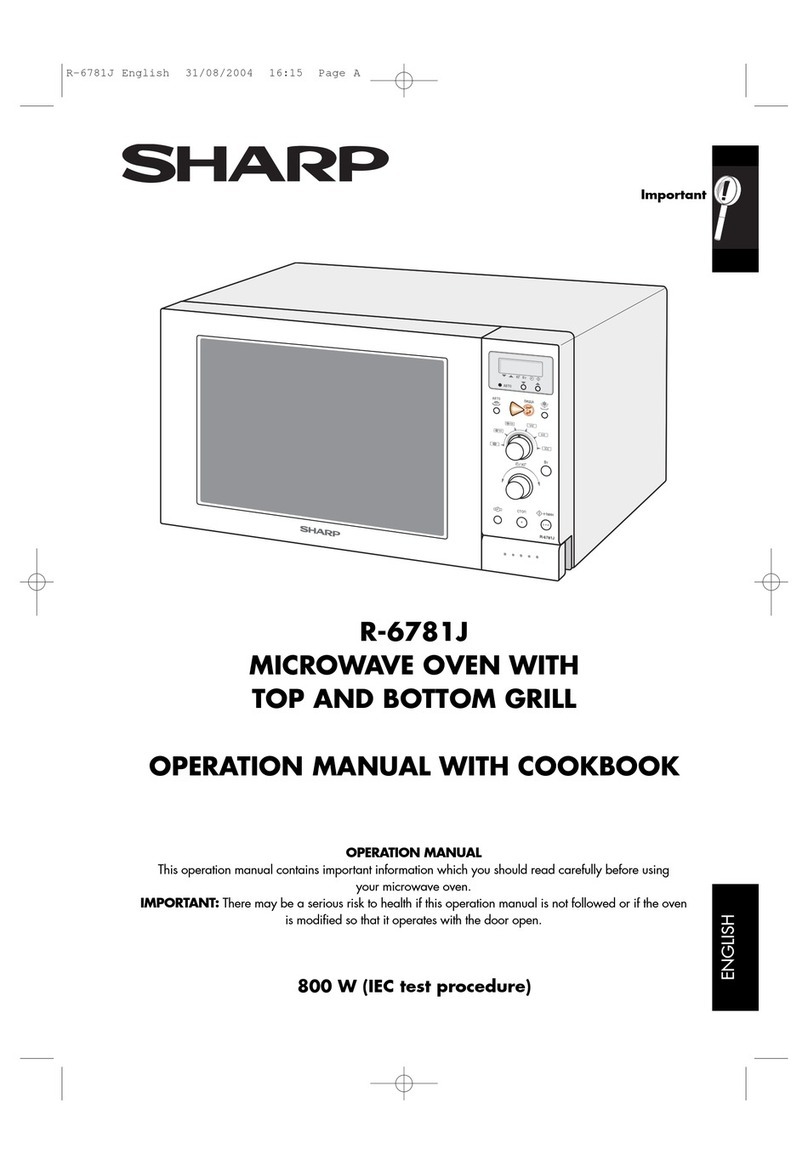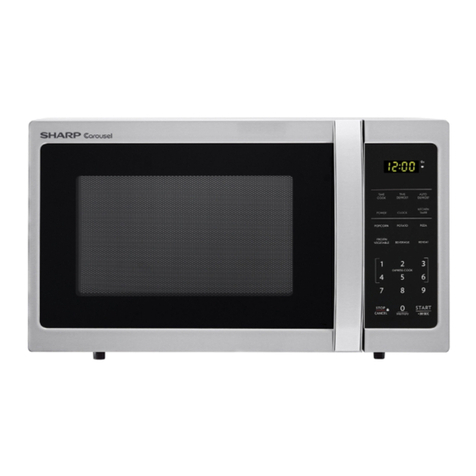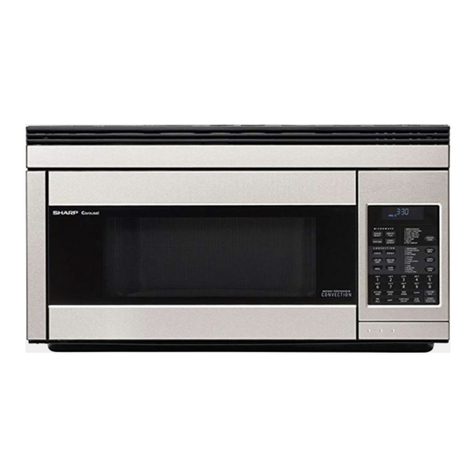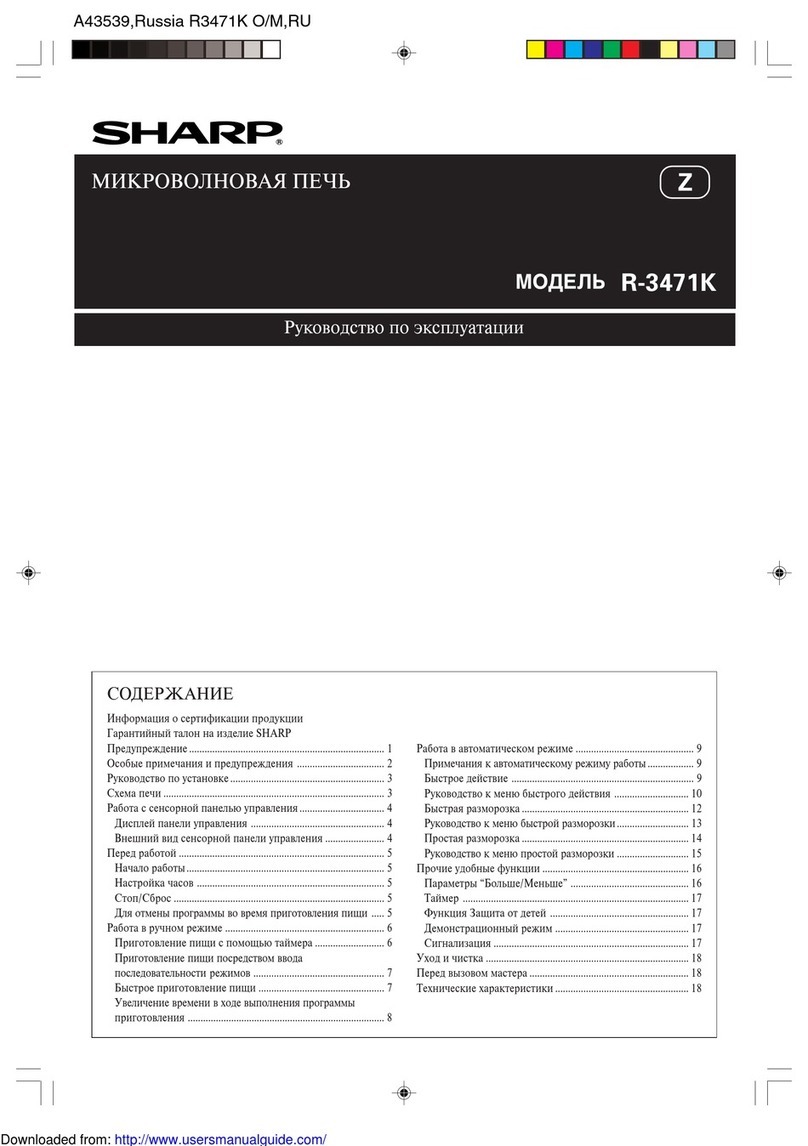Sharp R-4A55 User manual
Other Sharp Microwave Oven manuals
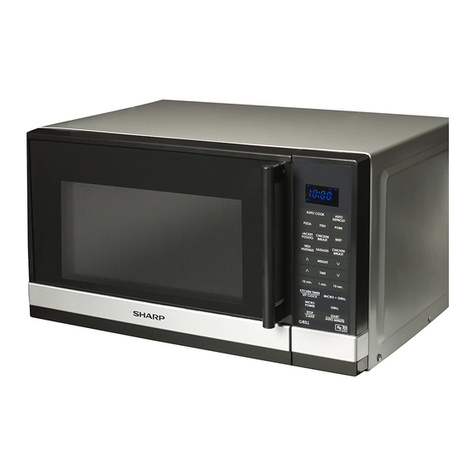
Sharp
Sharp R-658SLM User manual
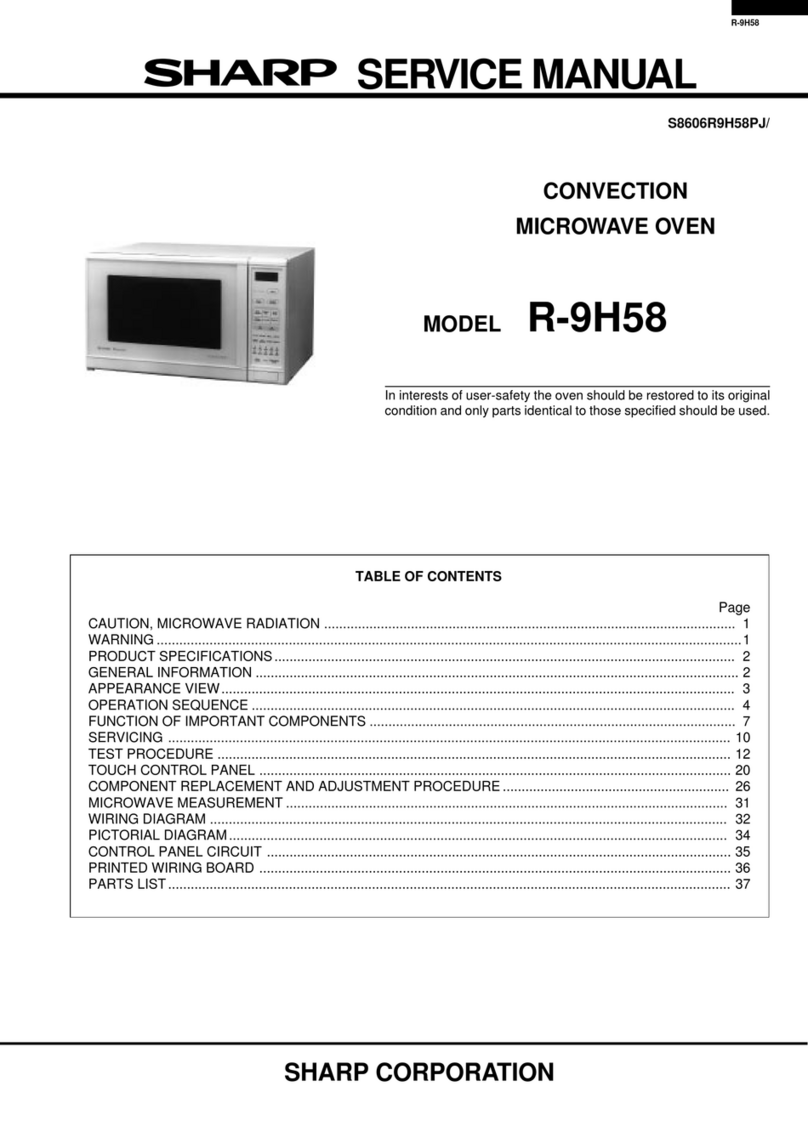
Sharp
Sharp R-9H58 User manual
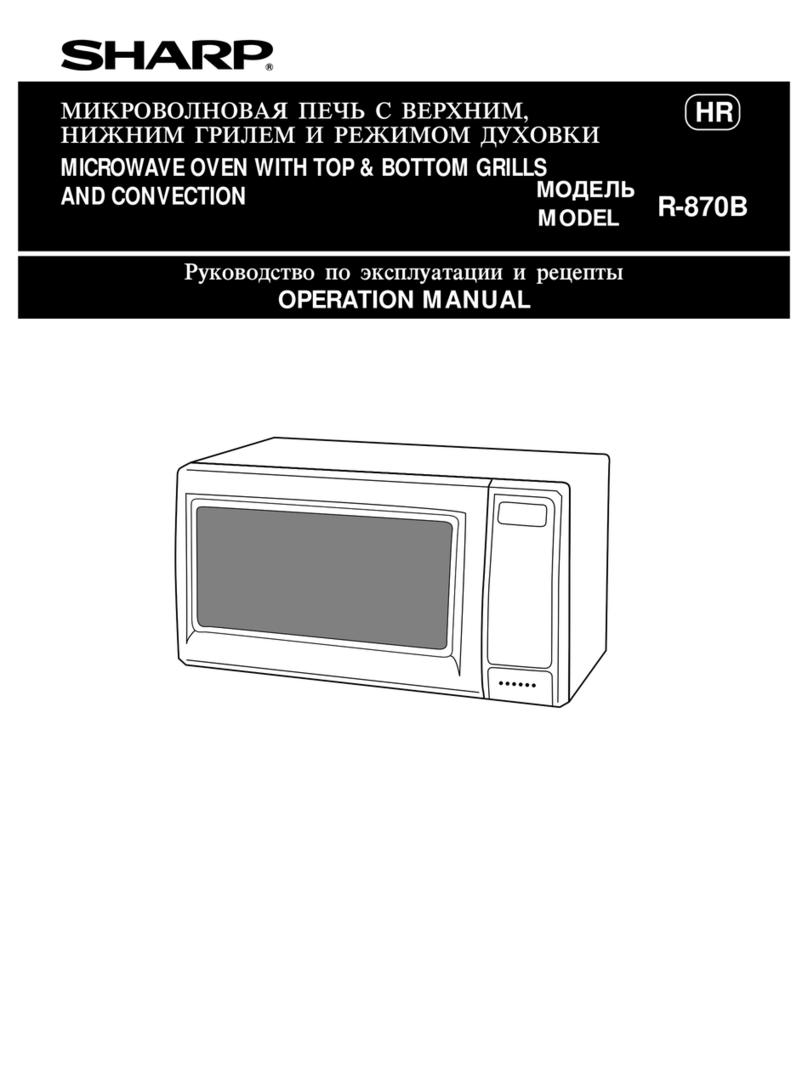
Sharp
Sharp R-870B User manual

Sharp
Sharp R-247E Use and care manual
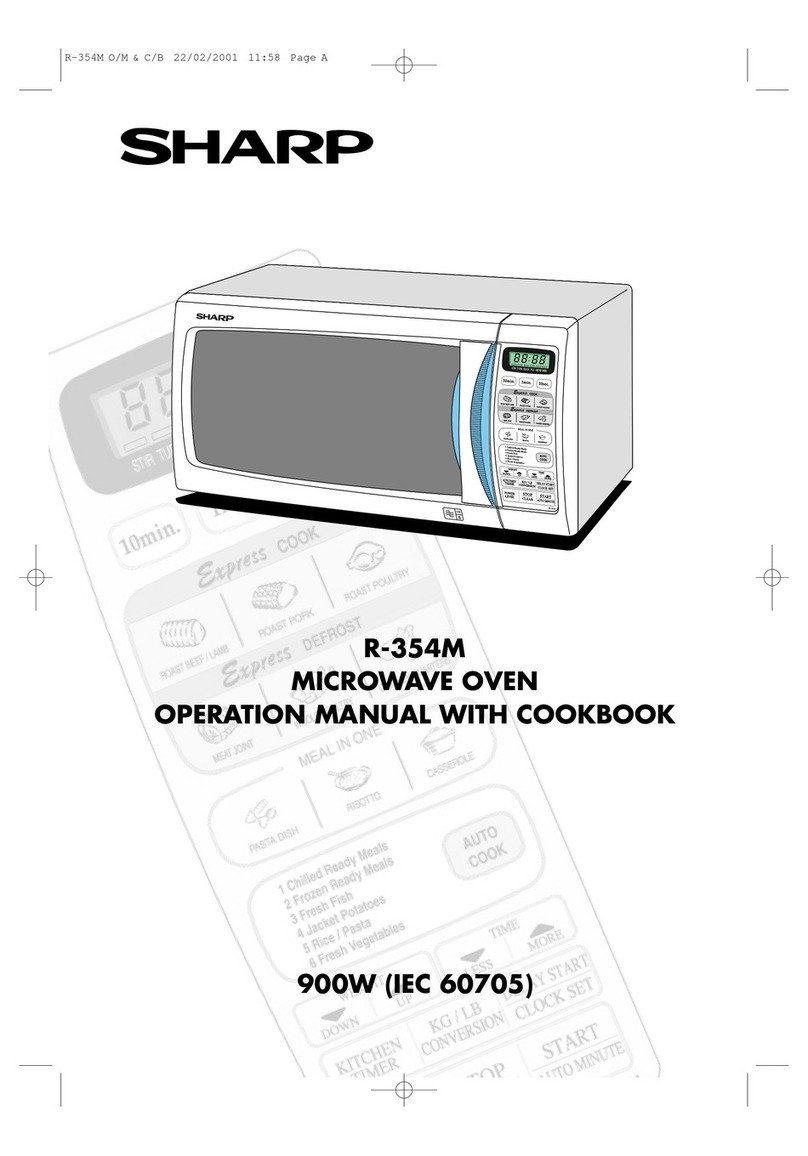
Sharp
Sharp R-354M Instruction Manual
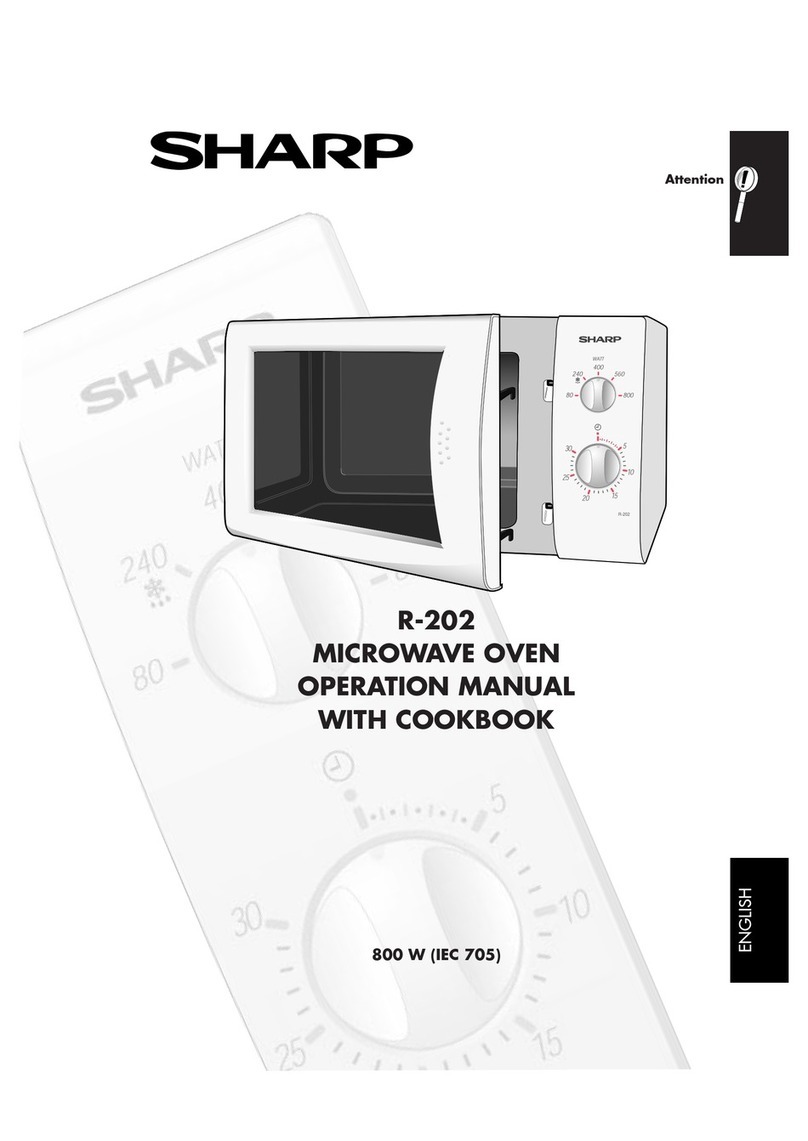
Sharp
Sharp R-202 Instruction Manual
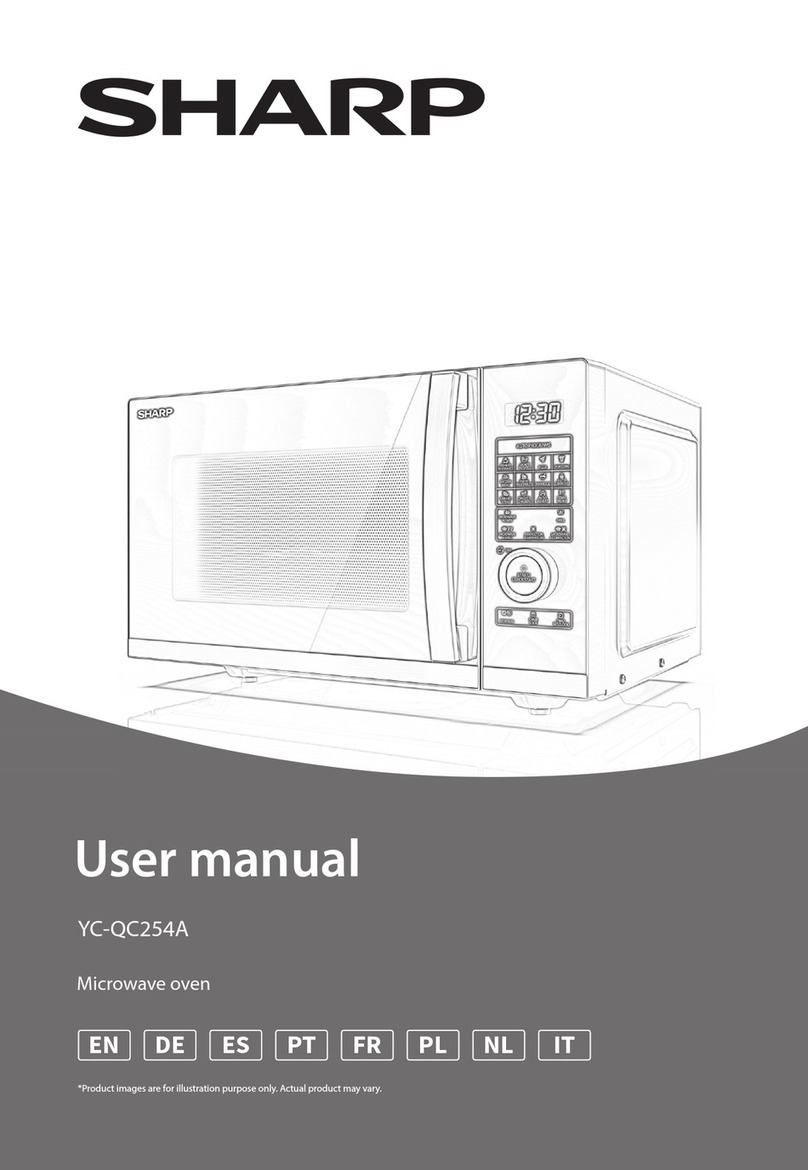
Sharp
Sharp YC-QC254A User manual
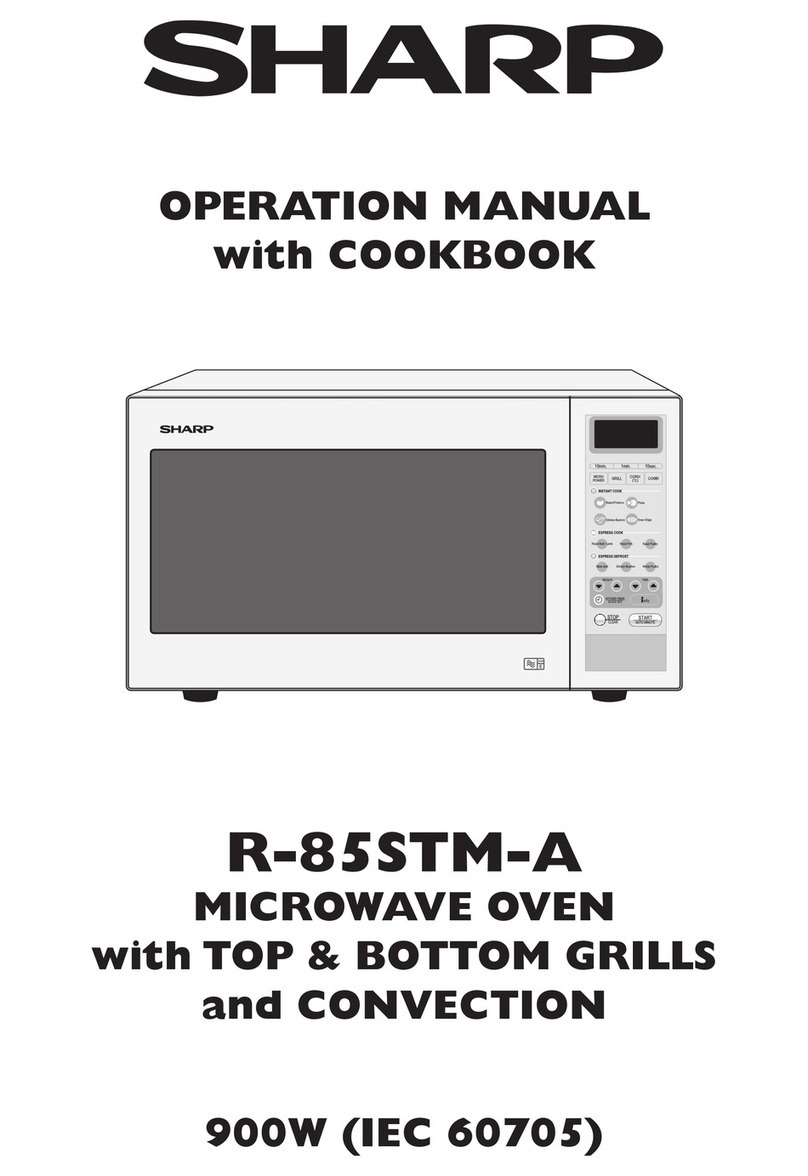
Sharp
Sharp R-85STM-A User manual
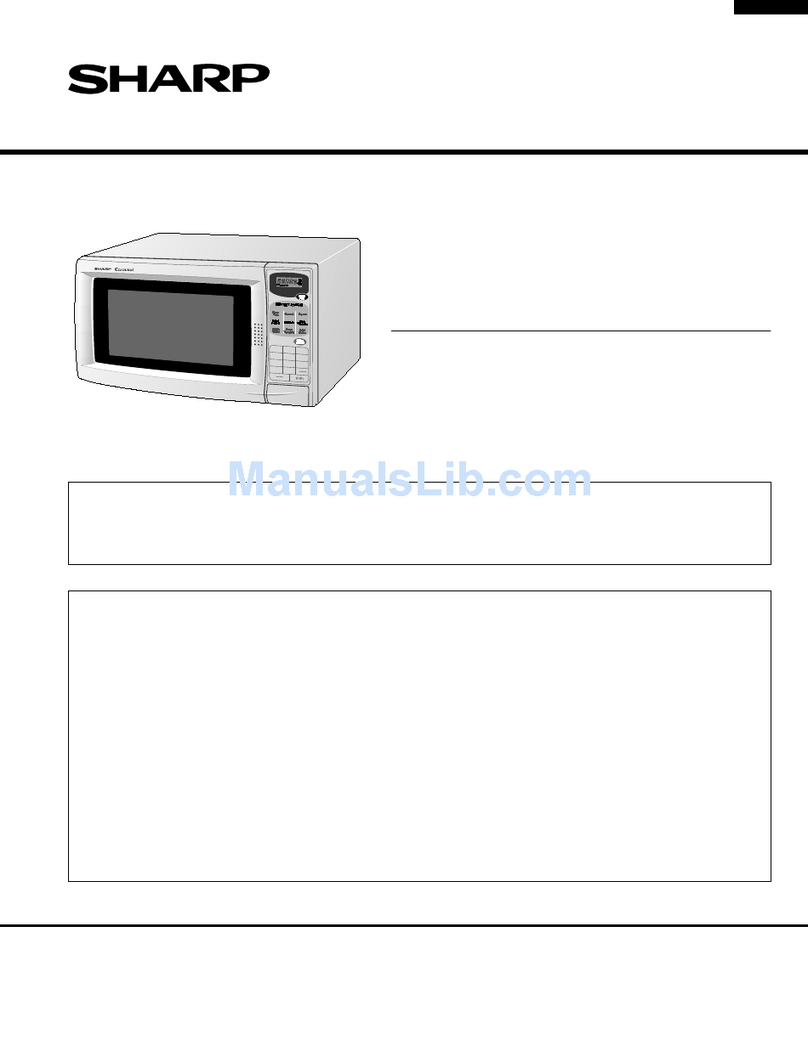
Sharp
Sharp R-303CW User manual

Sharp
Sharp R642BKW User manual
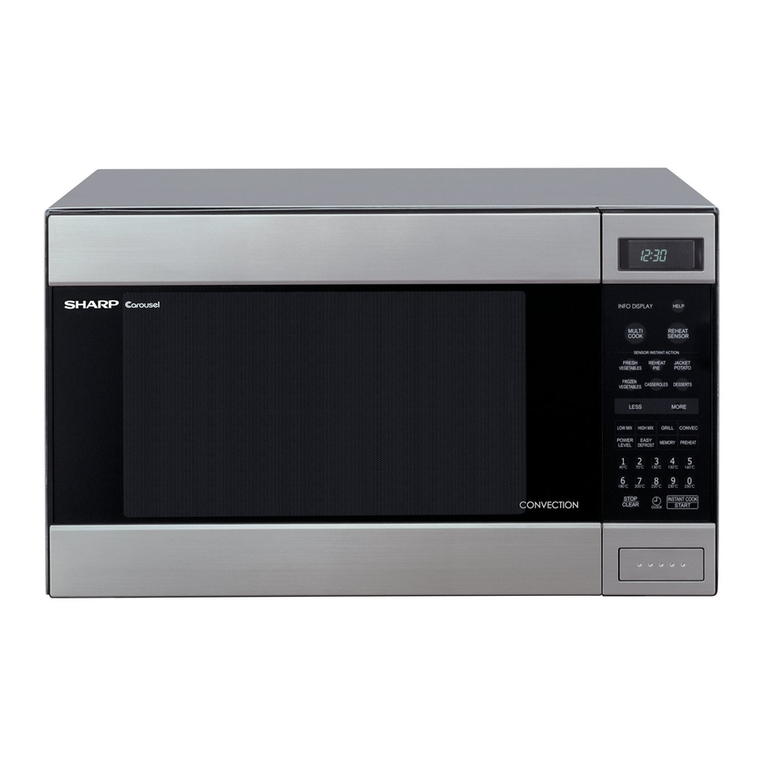
Sharp
Sharp Carousel R-990KS User manual
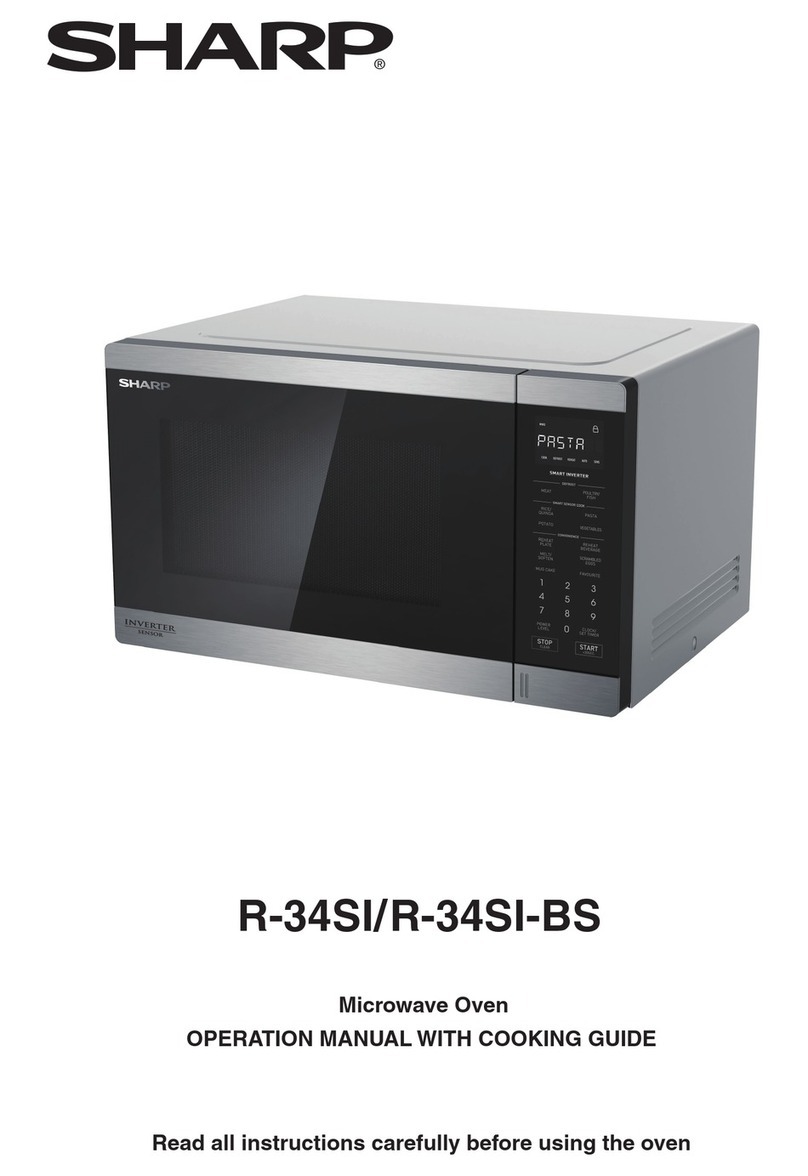
Sharp
Sharp R-34SI User manual
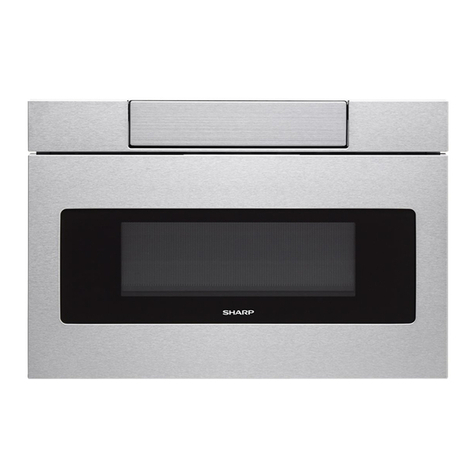
Sharp
Sharp SMD2470AH User manual
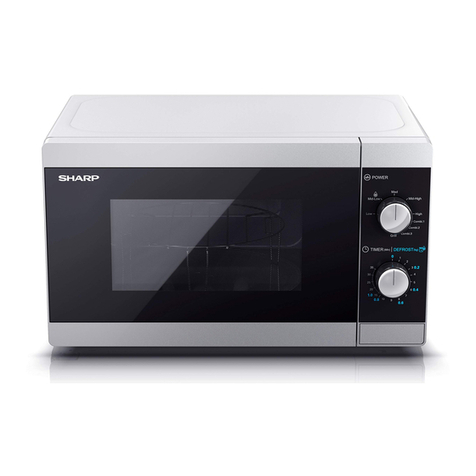
Sharp
Sharp YC-MG01U-S User manual
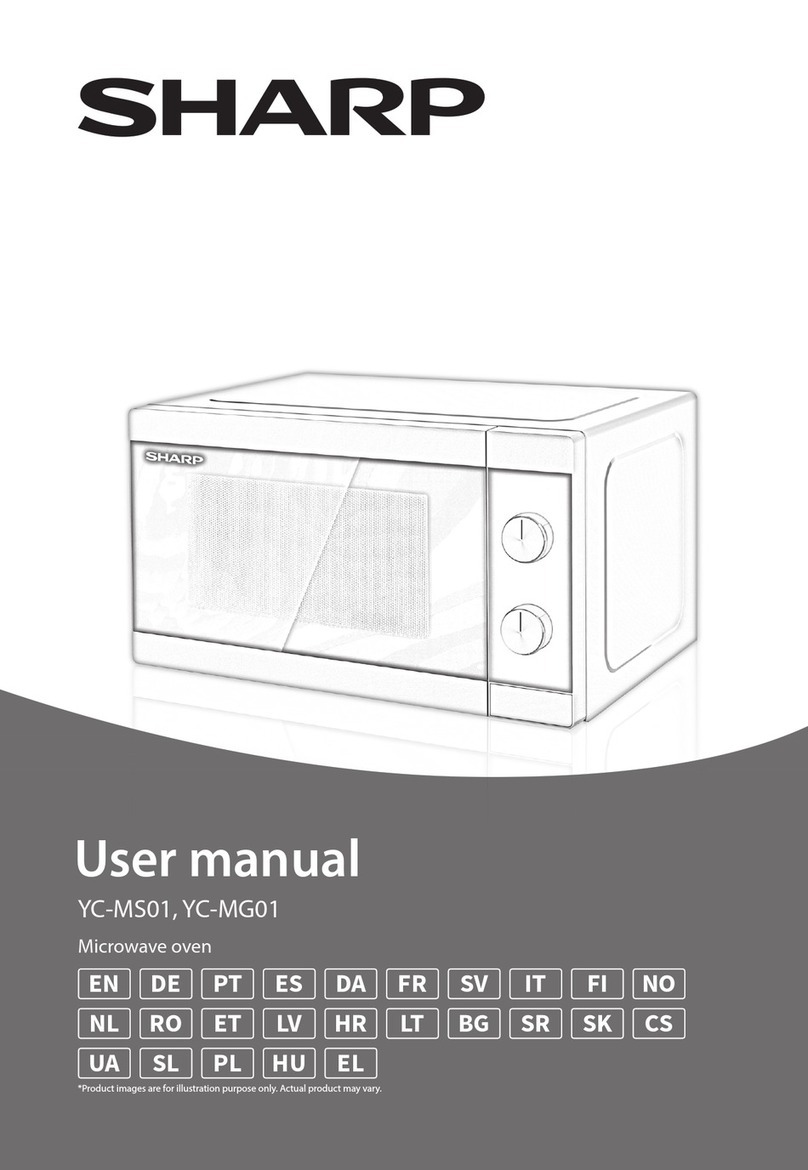
Sharp
Sharp YC-MS01 User manual

Sharp
Sharp Carousel R-350R User manual
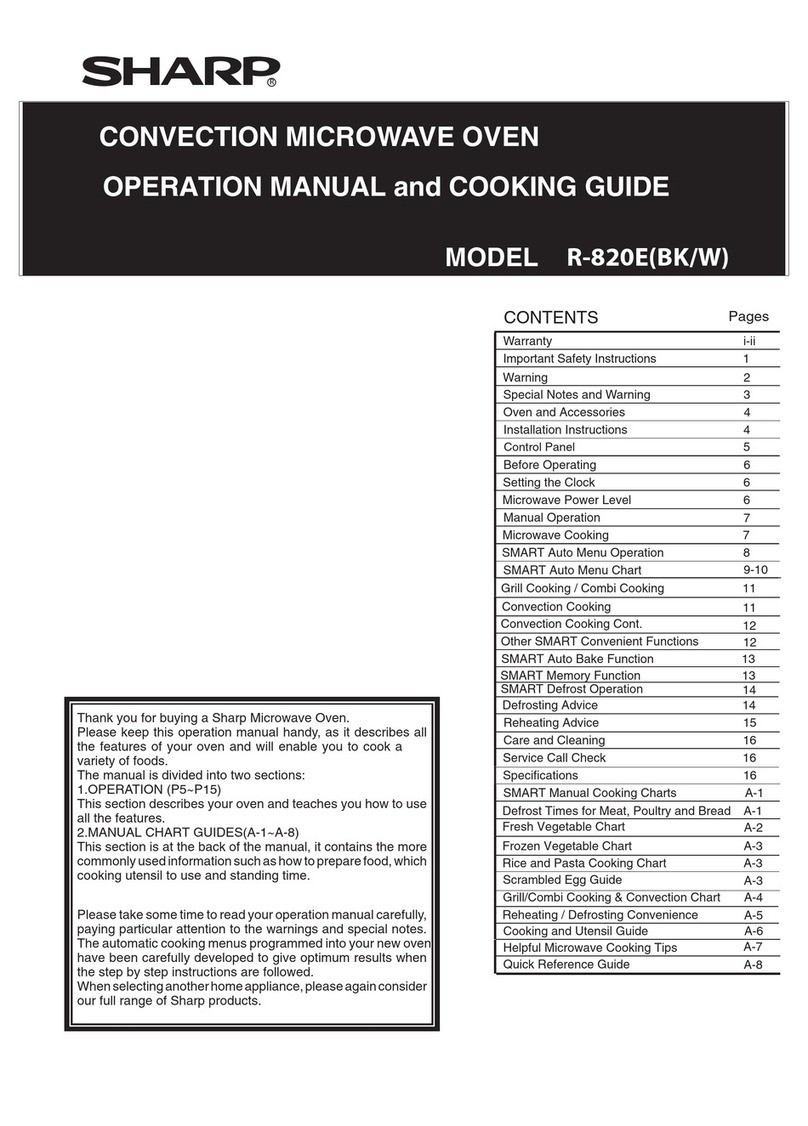
Sharp
Sharp R-820E Instruction Manual

Sharp
Sharp KB-6015KK User manual
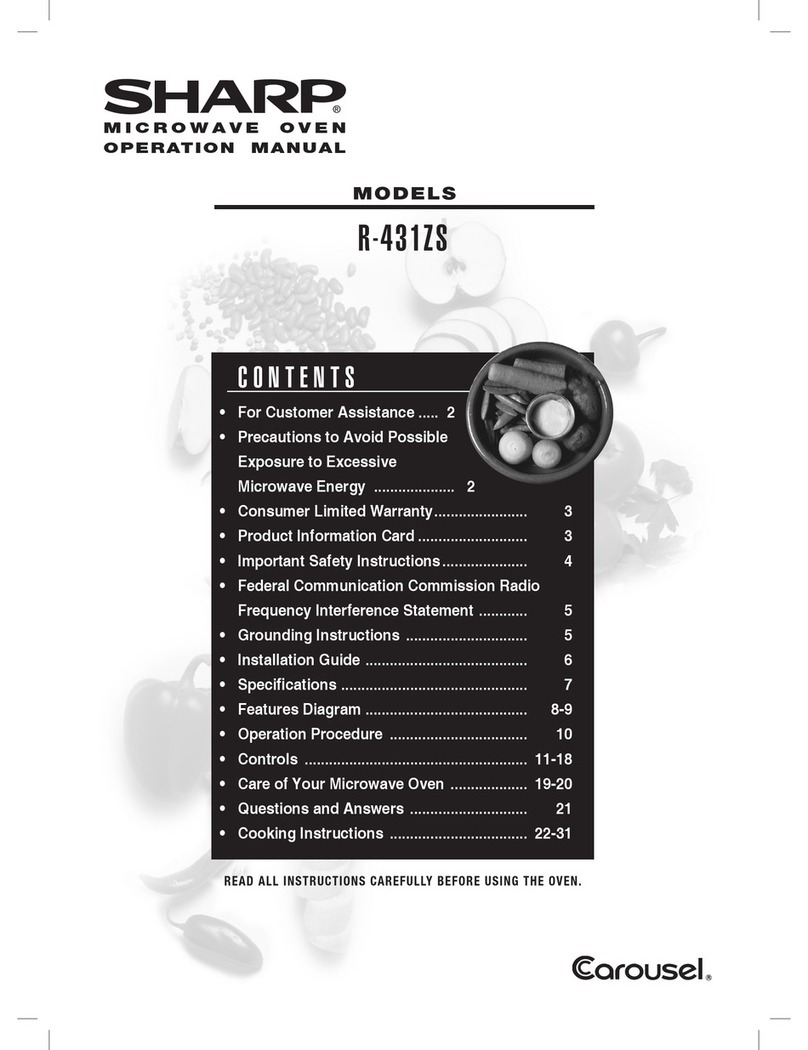
Sharp
Sharp Carousel R-431ZS User manual
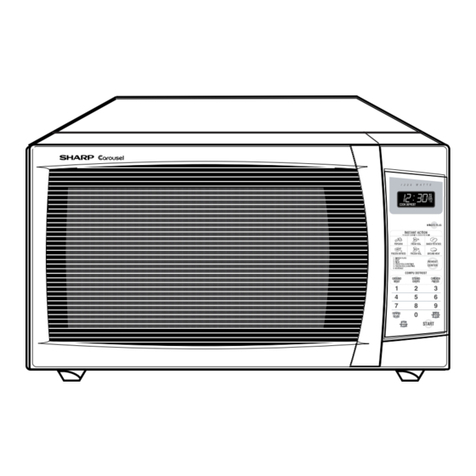
Sharp
Sharp R-408EW User manual
Popular Microwave Oven manuals by other brands

GE
GE Spacemaker JVM1440BH datasheet

DAEWOO ELECTRONICS
DAEWOO ELECTRONICS KOR-6L8K5S83 Operating instructions & cook book

DAEWOO ELECTRONICS
DAEWOO ELECTRONICS KOR-1N5A9S Operating instructions & cook book

Daewoo
Daewoo KQG-6617G Operating instructions & cook book

Samsung
Samsung M1779 Owner's instructions

GE
GE JES1143 Use and care & cooking guide

Miele
Miele H6200BM(TB) Operating and installation instructions

Jocel
Jocel JMO011480 instruction manual

Electrolux
Electrolux EVL8E00X user manual

STOVES
STOVES Q900GRF DO User, installation & servicing instructions

Daewoo
Daewoo KOR-6L0B3S Operating instructions & cook book

KitchenAid
KitchenAid KCMS1555 Use and care guide
